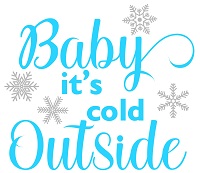 It’s good to get outdoors into the sunlight for some fresh air and natural Vitamin D production, but frostbite is one winter wellness challenge you and your entire family can’t afford to ignore.
It’s good to get outdoors into the sunlight for some fresh air and natural Vitamin D production, but frostbite is one winter wellness challenge you and your entire family can’t afford to ignore.
What is Frostbite?
Frostbite occurs when the skin literally freezes. Spending too much time outdoors in the cold and wind without being protected sufficiently from the elements is the main cause. Children are more prone than adults because of their more sensitive skin.
Frostbite can be dangerous if not treated quickly, leading to permanent tissue damage and even loss. Due to the skin freezing, blood is no longer able to flow to, for example, the tips of the fingers of someone who isn’t wearing gloves or mittens. The loss of blood flow results in a loss of circulation and the skin and underlying tissue will start to die.
If the skin is not re-warmed in a timely manner, it can turn black and might even develop gangrene and need to be removed surgically.
Hypothermia
Hypothermia, that is, low body temperature, might also result as well as frostbite. It is a particular risk if someone ends up falling into a cold body of water, such as a river or lake, while they are ice skating. Hypothermia is a medical emergency as well.
Getting Treatment
In the case of both frostbite and hypothermia, the most important thing is to rewarm the skin or body. Avoid rubbing, as this can cause tissue damage. Blowing gently can help. In the case of mild frostbite, known as frost nip, going inside and warming up near a heat source (but not touching it) should be enough to help things thaw out.
For severe frostbite, the area should be soaked in warm water until the temperature adjusts and the skin has thawed.
In the case of hypothermia, blankets and getting them to the hospital will help. There they will get a warming blanket and perhaps even an intravenous drip of warm saline to restore normal body temperature.
Prevention
Pay attention to the weather reports. Use common sense. It may look sunny outside, but if it is very windy, don’t stay out too long. Wind chill can make temperatures feel much colder than they actually are.
Bundle up as warmly as possible. A hat and/or hood will help protect your head and reduce the loss of body heat from the cold. A scarf will protect your throat and chest and also your face if needed.
Gloves or mittens will keep fingers frost-bite free. Be careful playing with wet snow, as your fingers can start to freeze through wet woolly gloves if you are out for a long time.
If it is a really cold day, a face mask or balaclava can help.
Go inside when you feel chilled. Avoid smoking tobacco, which is bad for your circulation. Steer clear of alcohol. People may think that it has a warming effect, but the truth is it actually makes it more difficult for your body to regulate its own temperature and decreases circulation, boosting the risk of frostbite.





